XFX’s Radeon HD 5770, A Look At The 5770 Revision 2 Cooler
by Ryan Smith on January 5, 2010 12:00 AM EST- Posted in
- Ryan's Ramblings
From our Radeon HD 5770 Review:
Interestingly enough, we’ve been told that the Phoenix shroud isn’t going to be sticking around for long. The first wave of cards launching today and for the near future will be using the shroud, but once AMD’s vendors begin using their own designs, AMD doesn’t expect most of the vendors to stick with the shroud. XFX has specifically been named as a party that will keep using the shroud on products, but anyone else is subject to change. With a TDP of only 108W, the Phoenix shroud is probably overbuilt and certainly more expensive than vendors would like, where mainstream products come with thinner margins. We would expect the vendors that do switch to move to more traditional dual-slot coolers, likely ones that aren’t shrouded at all and would not blow hot air outside of the case.
What AMD explained to us quickly came to pass, and once the first wave of 5770s sold out, the replacement waves started coming with coolers besides the Phoenix shroud. Since then we’ve had a number of people ask us how the later coolers compare to the Phoenix, and this is something that we can finally answer today.
XFX's 5770 Rev 2
XFX – who AMD named as one of the companies who would be selling the Phoenix along with other cooler designs – was kind enough to send over one of their alternative 5770 models for this cooler evaluation. Our particular interest in this card is that it uses the same egg-shrouded cooler that is appearing on the majority of 5770s seen in retail, making it the de-facto standard 5770 cooler. For the sake of simplicity, we are calling this the 5770 Revision 2 cooler. In XFX’s case, this is sold alongside cards using the Phoenix and another card using an open cooler similar to the Rev 2.
When first looking at the Rev 2, looks can be deceiving. While it does use an egg-shaped shroud very similar to that found on the 5750, the actual HSF unit is entirely different, making the similarities merely superficial. Ultimately the 5750’s HSF was a simple aluminum heatsink sitting on top of the GPU, with a fan sitting on top of the heatsink. For the 5770, a much more elaborate HSF is used, consisting of a copper block with a pair of heatpipes embedded. These heatpipes then run the entire circumference of a circular aluminum heatsink that sits on top of the copper block. Finally, sitting in the middle of the heatsink (and not above it) is the fan.

A side view of the Rev 2 cooler
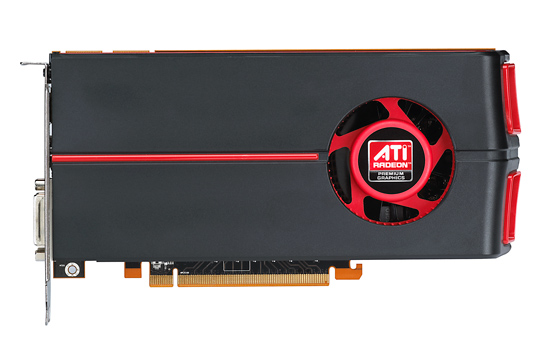
The original Phoenix cooler
In short, in spite of the visual similarities to the 5750’s cooler, the Rev 2 cooler entails a much larger heatsink using heatpipes and better fan placement. If you’ve ever seen Zalman’s VF900 GPU cooler, then the design is very similar to that.

Overall the Rev 2 is very similar to the Zalman VF900 (image courtesy Zalman)
With the change in coolers comes some space savings for the card. As the Phoenix shroud added another half-inch to the total length of the 5770, it pushed an 8.25” design out to 8.75”. With the Rev 2 cooler there is no overhang, bringing the card in at just the PCB length of 8.25”. This also means that the 6-pin PCIe power plug is no longer partially hidden by the shroud, making it easily accessible on the Rev 2.
We should note that while the cooler has changed, the PCB has not. The PCB on this card is exactly identical to the PCB on our 5770 reference card. In fact the only difference besides the cooler is the use of Samsung GDDR5 rather than Hynix GDDR5. In benchmarks there is absolutely no difference in performance between our Rev 2 card and our original reference card. So the only practical difference is the cooler.
That brings us to what kind of difference the change in coolers brings. When we first discussed the 5770, we noted that the Phoenix was probably overbuilt for the relatively low 108W TDP of a 5770. Indeed that appears to be the case, as you can see with the results of our Rev 2 cooler.
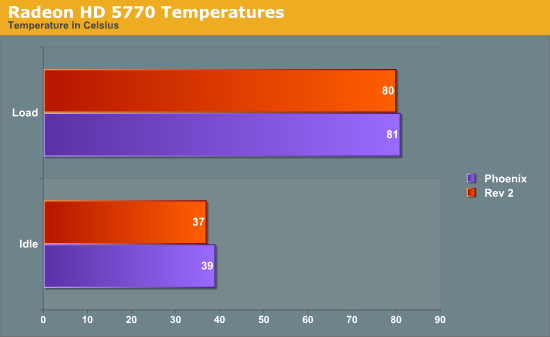
We’ll start with a look at temperatures. Our expectations for the Rev 2 cooler were for higher overall temperatures since its design means that it has to recycle some hot air rather than blowing it entirely out of computer like the Phoenix cooler does, and it’s here where we found our first surprise. Rather than being warmer than the Phoenix, the Rev 2 is cooler (if ever so slightly) in both idle and load situations. At a 2C and 1C different at idle and load respectively it’s not a huge difference, but it’s an extremely notable difference since the otherwise simpler Rev 2 cooler is clearly keeping up with and otherwise outperforming the Phoenix.
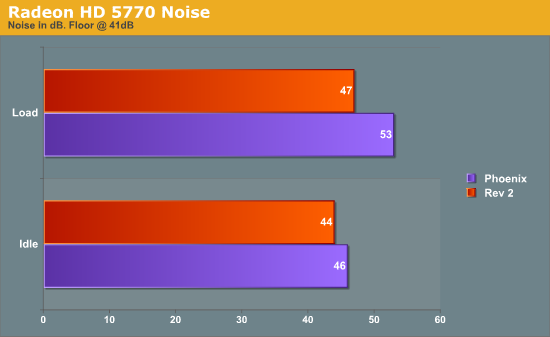
Our other surprise came in our noise tests .Surely the Phoenix would be quieter thanks to its shrouding, right? Wrong we were once again. In fact the difference is even more pronounced than the temperature differences. The Rev 2 cooler not only manages to stay quieter than the rest of the computer (something the Phoenix can’t claim) but at load the difference becomes 6dB. While the Phoenix cooler is by no means a loud cooler, the Rev 2 in comparison is whisper-silent. Even compared to itself, the Rev 2 is only 3dB louder under load than it is while idling.
Final Thoughts
Frankly, based on this data we have a hard time justifying the Phoenix over the Rev 2 cooler. The Rev 2 makes for a smaller board, a slightly cooler GPU, and a significantly quieter video card. Thusly the only advantage the Phoenix cooler has is that it completely exhausts all hot air, which in the case of our well ventilated Thermaltake case isn’t doing it any favors. Unless this card is placed in a case with extremely poor airflow, we can’t think of a situation where the Phoenix cooler is superior (and in which case, we’re left wondering whether there would be enough fresh air to satisfy the Phoenix regardless).
The Phoenix cooler may be the better looking (and 5800-series matching) cooler, but ultimately it’s not the best cooler. AMD and their partners were wise to ditch the Phoenix for the Rev 2 in most of their design, as it offers better thermal and acoustic performance, not to mention a lower resulting price (we’d peg the difference at about $10 retail). In fact at this point we’re left wondering why they launched the Phoenix at all –ultimately it would have been all the more impressive for the 5770 and cheaper for consumers if they had just launched with the Rev 2 cooler in the first place.


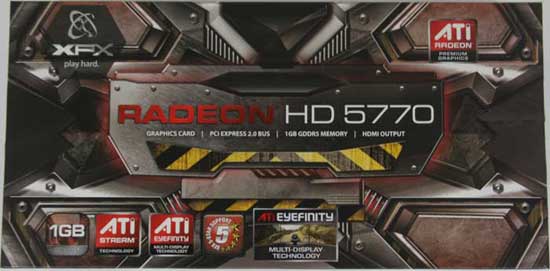
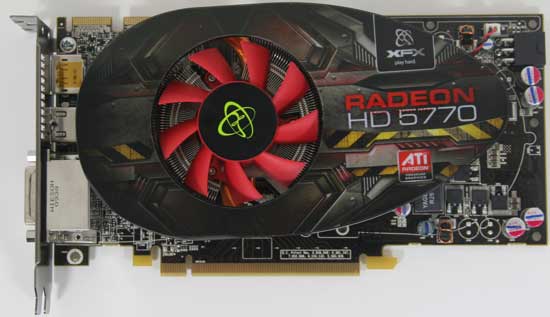








34 Comments
View All Comments
marc1000 - Wednesday, January 6, 2010 - link
I don't believe it is possible to change the fan on the Phoenix-like style coolers... you could however blow some cold air to help the fan, and that is what I will do to my case in about one month (I will cut a 8cm x 2cm hole, and put two low-rpm 4cm fans to push air directly above the gpu air entrance).SorinNita - Wednesday, January 6, 2010 - link
Your post was interesting but a little to short and with a few omissions. I say this because a have a few unanswered questions like:1. What about VRM temperatures? I think that the Pheonix shroud is way better at controlling the VRM temperatures.
2. What happens when you overclock the card. Maybe the v2 cooler, cools better and has a lower noise compared to the Pheonix shroud but whan overclocking comes into question how does the maximum oc changes.
3. How do the coolers perform at predefined setting like 50% and 100% rpm.
I'm really interested in getting an answer to those questions.
7Enigma - Wednesday, January 6, 2010 - link
I was thinking along the same lines. You might have better GPU temps but might have higher memory temps which will limit the OC potential. Also I HATE non-ventilated cooling designs. There is no excuse for keeping the heat in the case in anything other than budget cards that don't produce a lot of heat. All that extra heat is (if your lucky) going out through case fans, but some of it is going through the PSU/memory/CPU and back through the GPU. Give me a NORMAL case that doesn't have 17 large fans and see how the case temps differ when going from a mainly exhausted design (Pheonix) to the v2 design.MadMan007 - Wednesday, January 6, 2010 - link
FYI other reviews that compared the Phoenix vs v2 cooler showed very minor increases in case temperature. It just would have been nice to see it in this review.Spoelie - Wednesday, January 6, 2010 - link
Valid questions, but this is a blog post and not a full review ;)SorinNita - Thursday, January 7, 2010 - link
Yes, I know but I was expecting more...Now i have this hunger for more info and no way to satisfy it.
somidiot - Tuesday, January 5, 2010 - link
I don't like the coolers that don't include the memory. I noticed that there weren't any numbers for the mem temps.RaistlinZ - Tuesday, January 5, 2010 - link
Yeah, the Phoenix shroud looks sexy but I'm sure the noise from having two of them in your case isn't sexy. Does this new revision add to the price of the card?The0ne - Tuesday, January 5, 2010 - link
I'm a rice boy, I'm all for sexy, even if it's PC. Those intel, amd and numerous 3rd party supplier logos make my machine scream like mad. Well, it's more like "WTF are you doing to me you dmbfck." But it's till fast imo.muddocktor - Tuesday, January 5, 2010 - link
I would like to see some cooling numbers with both the cards overclocked at the highest common speeds that both card can get to stably, to see if the better cooling on Rev 2 persists with a higher heatload.